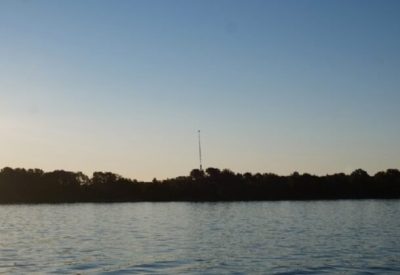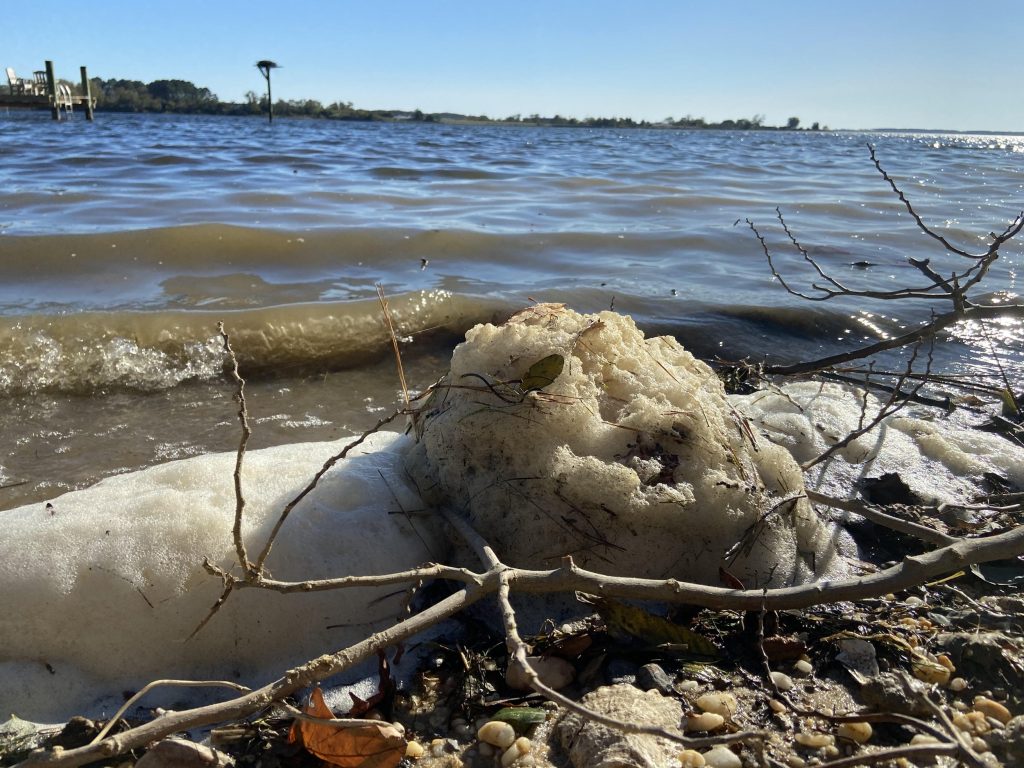Proposed Navy Radio Towers Threaten Community

All Global Research articles can be read in 51 languages by activating the “Translate Website” drop down menu on the top banner of our home page (Desktop version).
To receive Global Research’s Daily Newsletter (selected articles), click here.
Visit and follow us on Instagram at @globalresearch_crg and Twitter at @crglobalization.
***
Webster Field Annex, Naval Air Station Patuxent River, Maryland plans to build six radio towers to aid drone warfare.
Locals are concerned about radio frequency radiation and the disturbance of contaminated groundwater and surface water.
The six towers the Navy plans to construct on Webster Field will emit various levels of radio frequency radiation, (RFR). Epidemiological studies and research on laboratory animals link RFR with impacts on the heart, brain, and other organs.
Several human studies indicate that proximity to base stations correlates with headaches, dizziness, depression and other neurobehavioral symptoms, as well as increased cancer risk. Animal studies also indicate that these effects may be cumulative. This is the take-away from a study by Michigan Technological University that urges caution regarding the placement of towers that emit RFR. The study says a 500-meter (1,640’) buffer may help reduce risk for vulnerable populations. Given the current research, the study says cell towers should be cautiously placed this far away from “lots of sleeping people.”
The quantity used to measure the rate at which Radio Frequency (RF) energy is absorbed in a body is called the “Specific Absorption Rate” or “SAR.” A Maximum Permissible Exposure is recommended by various federal agencies for electric and magnetic field strength and power density. The threshold level is a Specific Absorption Rate (SAR) value for the whole body of 4 watts per kilogram.
(Questions to the Navy in bold.)
The width of St. Inigoes Creek varies from 800’ at the tip of the Lucas Cove peninsula to 2,000’ at the mouth of the creek.
If I am on my dock, 1,600 feet from the shores of Webster Field, can you provide an estimate of the SAR in watts per kilogram from each tower?
If I’m in my boat, directly across from my property, along the shores of Webster Field, can you provide an estimate of the SAR from each tower?
A number of reports have appeared in the scientific literature describing the observation of a range of biological effects resulting from exposure to low levels of RF energy. Tissue damage in humans can occur as a result of long-term exposure because of the body’s inability to cope with or dissipate the excessive heat that may be generated.
Have you performed studies that estimate the levels of radio frequency radiation from the types of towers you are constructing? If so, could you share them with us?
If you have not performed a study, are you willing to commission a study in this regard and share the results with us?
We know that guidelines for maximum permissible exposure are different for different transmitting frequencies. The most restrictive limits on whole-body exposure are in the frequency range of 30-300 MHz where the human body absorbs RF energy most efficiently when the whole body is exposed.
What frequency ranges will the Navy be using at each of the six towers?
The FCC authorizes and licenses devices, transmitters and facilities that generate RF radiation. It has jurisdiction over all transmitting services in the U.S., but not over the DOD.
Facilities under the jurisdiction of the FCC having a high potential for creating significant RF exposure to humans, such as satellite-earth stations, etc. are required to undergo routine evaluation for compliance with RF exposure guidelines whenever an application is submitted to the FCC for construction or modification of a transmitting facility or renewal of a license. This oversight is not extended to DOD facilities. Even if it did, the FCC has been failing in its responsibility to enforce health and safety guidelines.
Is the Navy willing to submit to civilian authority in this matter?
The amount of RF energy to which the public might be exposed as a result of antennas depends on several factors, including the type of station, design characteristics of the antenna being used, power transmitted to the antenna, height of the antenna and distance from the antenna.
Could you describe for us the exact type of stations you are planning to build?
What are the design characteristics of the antennas being used?
How much power will be transmitted to the antennas?
Calculations can be performed to predict what field intensity levels would exist at various distances from an antenna.
Can you provide the amount of RF energy generated at each tower in terms of increments of 100 feet heading north toward the Rosecroft community?
Also, since energy at some frequencies is absorbed by the human body more readily than at other frequencies, both the frequency of the transmitted signal and its intensity is important.
Could you provide this information for each tower?
We have compelling reasons to be skeptical that the DOD and the federal government are taking steps that are protective of our health. The Children’s Health Defense won a historic case against the Federal Communications Commission in August, 2021. The case challenged the agency’s decision not to review its 1996 health and safety guidelines regarding the latest wireless-based technologies.
The U.S. Court of Appeals for the DC Circuit ruled that the FCC failed to consider the non-cancer evidence regarding adverse health effects of wireless technology when it decided that its 1996 radiofrequency emission guidelines continue to protect the public’s health.
Children’s Health Defense Chairman and attorney for the case Robert F Kennedy, Jr. said, “The court’s decision exposes the FCC and FDA as captive agencies that have abandoned their duty to protect public health in favor of a single-minded crusade to increase telecom industry profits.”
We’ve witnessed the same abdication of federal power among several agencies regarding the threat posed to human health by PFAS contamination.
Is there a potential for radio frequency interference with our communication equipment such as radios, TVs, wireless, cell phones, garage door openers, etc.?
What is the Navy doing to ensure RFI does not occur?
Is there a project test plan that addresses RFI and RF human exposure issues?
Soil, Groundwater and Surface Water Issues
Carcinogenic PFAS foam gathers on my beach on the north shore of St. Inigoes Creek in St. Mary’s City, Maryland.. Webster Field is shown 1,600’ across the creek. The foam was tested and found to contain nearly 5,000 parts per trillion of PFAS while the European Union limits the chemicals to .65 ppt. in surface waters.
This narrative on soil and groundwater contamination at Webster Field is followed by several questions for the Naval command regarding the proposed construction of the six towers on base.
Webster Field is a trainwreck of toxic chemicals. The Navy has reported that high concentrations of aluminum, arsenic, cobalt, iron, manganese, and thallium are present in surface soil samples, while cobalt, copper, cyanide, manganese, mercury, thallium, vanadium, and zinc were recently found in subsurface soil samples.
The construction of the towers may result in contaminated waters draining into the creek and the river.
The base was used as a bombing range in the 1940’s and 1950’s, leaving massive concentrations of poisons in the soil. Just a few years ago Navy contractors unearthed Twelve 3-pound practice bombs – depths ranged from 2 to 32 inches. The Navy classifies these as MPPEH – material potentially presenting an explosive hazard.
Navy reports say the primary mechanisms for transport of MPPEH and related constituents from the potential source areas may include:
- Transport or migration of munitions-related items by erosion or soil disturbance
- Transport of contaminated soil particulates via overland surface runoff to downgradient terrestrial areas and/or surface water bodies
- Transport of contaminated soil particulates via wind or soil disturbing activities to surrounding terrestrial areas and/or surface water bodies
- Leaching of chemicals from surface/subsurface soils into groundwater via infiltrating precipitation, and potential discharge of contaminated groundwater into downgradient surface water bodies
- Uptake by biota from soil and trophic transfer to upper trophic level receptors (the poisons enter the seafood we consume)
The last item is most important because many in the neighborhood still consume the seafood from these contaminated waters.
*
Note to readers: Please click the share buttons above or below. Follow us on Instagram, @globalresearch_crg and Twitter at @crglobalization. Forward this article to your email lists. Crosspost on your blog site, internet forums, etc.
Sources
FINAL PROPOSED REMEDIAL ACTION PLAN MUNITIONS RESPONSE SITE UNEXPLODED ORDNANCE 1 (UXO 1) FORMER AERIAL BOMBING RANGE WEBSTER FIELD ANNEX NAS PATUXENT RIVER MD 10/01/2019 CH2M HILL
https://www.navfac.navy.mil/niris/WASHINGTON/PATUXENT_RIVER_NAS/N0428A_003069.pdf
FINAL REMEDIAL INVESTIGATION AND FEASIBILITY STUDY MUNITIONS RESPONSE SITE UNEXPLODED ORDNANCE 1 (UXO 1) FORMER AERIAL BOMBING RANGE NAS PATUXENT RIVER MD 09/01/2019 CH2M HILL https://www.navfac.navy.mil/niris/WASHINGTON/PATUXENT_RIVER_NAS/N0428A_003058.pdf
Featured image: In order to estimate the visual effect, the Navy flew drones to 150’ – the height of the proposed towers, then photo-shopped an estimated appearance of the tower onto an image taken from the water adjacent to the historic properties. https://lexleader.net/navy-plans-webster-field-tower-project/ This is the location of Maryland’s first settlement by English Catholics in 1634. Webster Field was purchased by the Navy from the Jesuits in 1943. The Jesuits acquired the property when Maryland was founded.


